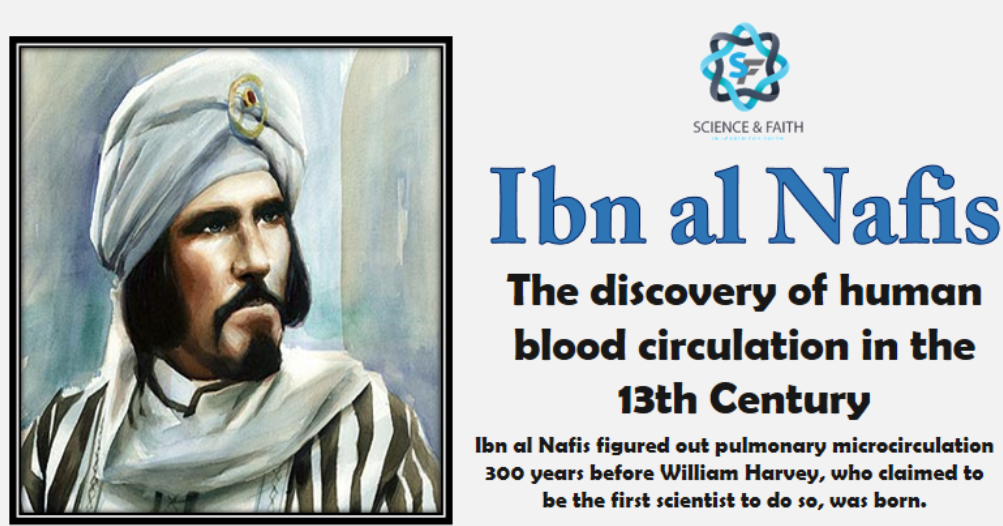 By Neenah Payne
By Neenah Payne
We are told that William Harvey (1578–1657) discovered the circulation of the blood. So, it will come as a surprise to learn that Ala al-Din Abu al-Hassan Ali Ibn Abi-Hazm al-Qarshi al-Dimashqi (1213–1288 ) — known in the West as “Ibn al-Nafis” — discovered it three centuries earlier. That was revolutionary because it corrected the mistakes of Galen, the 2nd century Greek physician. Ibn al-Nafis, a polymath, wrote over 110 medical texts and texts on other topics.
The article below explains:
Ibn al-Nafis wrote in a bewildering array of fields including physiology, medicine, ophthalmology, embryology, psychology, philosophy, law, and theology. One of the most important writings of Ibn al-Nafis was his Commentary on Anatomy in Avicenna’s Canon. Avicenna is usually referred to by his Latin name rather than Ibn Sina, and he was one of the most illustrious scholars of the period, although he preceded Ibn al-Nafis by some 200 years.
See Ibn Sina/Avicenna: Founder of Western Medicine
Pulmonary Circulation: Ibn al-Nafis
13th century blood circulation discovery 3/7/21
Named “the father of circulatory physiology”, Ibn al-Nafis’ knowledge and discoveries played an integral part in our life today.
Ibn al-Nafis, the pulmonary circulation, and the Islamic Golden Age
Ibn al-Nafis (1213–1288) was an Arab physician who made several important contributions to the early knowledge of the pulmonary circulation. He was the first person to challenge the long-held contention of the Galen School that blood could pass through the cardiac interventricular septum, and in keeping with this he believed that all the blood that reached the left ventricle passed through the lung.
He also stated that there must be small communications or pores (manafidh in Arabic) between the pulmonary artery and vein, a prediction that preceded by 400 years the discovery of the pulmonary capillaries by Marcello Malpighi. Ibn al-Nafis and another eminent physiologist of the period, Avicenna (ca. 980–1037), belong to the long period between the enormously influential school of Galen in the 2nd century, and the European scientific Renaissance in the 16th century. This is an epoch often given little attention by physiologists but is known to some historians as the Islamic Golden Age. Its importance is briefly discussed here.
ibn al-nafis (1213–1288) was an Arab physician who made significant contributions to the early knowledge of the pulmonary circulation. However, little has been written about him in the physiological literature. He forms a link between the early studies of the school of Galen (130–199) in the 2nd century and the European Renaissance scholars such as Michael Servetus (1511–1553), Realdus Columbus (1516–1559), Andreas Vesalius (1514–1564), and William Harvey (1578–1657).
The intervening period of some 1300 years, part of which is sometimes referred to as the Islamic Golden Age, is often largely ignored, and some of its contributions are emphasized here. Ibn al-Nafis was a remarkable man and deserves to be better known.
ISLAMIC SCIENCE IN THE 8TH TO 16TH CENTURIES
As alluded to above, there is a tendency for people who are interested in the history of physiology to move rapidly over the 1300 years between the flowering of the Greco-Roman school of Galen in the second century to the beginnings of the European Renaissance.
One of the reasons for this is the extraordinary influence that Galen’s teaching had for upward of 1400 years. For example, when William Harvey was at Cambridge University in the late 1500s, part of his instruction included Galen’s writings. In fact, some of Galen’s teachings, for example on blood-letting, were still being followed in the 18th century.
However, with the blossoming of the scientific Renaissance in Europe in the 15th and 16th centuries, Galen’s teachings were increasingly questioned by scholars such as Michael Servetus, Realdus Colombus, Juan Valverde (ca.1525–1587), Andreas Vesalius, and finally William Harvey. There is, therefore, a temptation to ignore the intervening 1300 years or so.
One the other hand, some historians of science refer to the period from the 8th to the 16th centuries as the Islamic Golden Age. This terminology is inexact but is shorthand for the scientific activity that took place in a substantial area of Europe and Asia from the Iberian Peninsula and north Africa in the west to the Indus Valley in the east, and from southern Arabia in the south to the Caspian Sea in the north.
Some scholars prefer the term “Arab science” because most of the documents were written in Arabic, which was the lingua franca of the region. However, not all the scientists were Arabs; indeed, some of the most distinguished, such as Avicenna (ca 980–1037), were Persians. In addition, although most of the scholars were Muslim, this was not true of all.
A number of important scholarly institutions developed in this period. Some of the most significant centers were Baghdad, Damascus, and Cairo. The institutions included groups of scholars in schools that were like emerging universities in that they were made up of collections of like-minded academics and teachers. There were also academic hospitals, libraries, and observatories.
For example, Damascus, where Ibn al-Nafis trained, boasted the Nasiri Hospital in the 12th century, which attracted many academic physicians including Ad-Dakhwar, who amassed a large library of medical texts. According to one authority, the University of Al Karaouine in Fes, Morocco, can claim to be the oldest university in the world, being founded in 859. Cairo had the Al-Azhar University, which began in the 10th century and offered academic degrees.
A feature of these institutions was the emergence of polymaths, that is scholars who worked in a large number of different areas. We are certainly aware of this to some extent in the European Renaissance when people such as Robert Boyle (1637–1691) made important contributions in chemistry, physics, mechanics, and physiology.
However, as we shall see, Ibn al-Nafis wrote in a bewildering array of fields including physiology, medicine, ophthalmology, embryology, psychology, philosophy, law, and theology. One of the most important writings of Ibn al-Nafis was his Commentary on Anatomy in Avicenna’s Canon (Sharh Tashrih al-Qanun Ibn Sina). Avicenna is usually referred to by his Latin name rather than Ibn Sina, and he was one of the most illustrious scholars of the period, although he preceded Ibn al-Nafis by some 200 years.
Avicenna was born in Persia in Bukhara Province, now part of Uzbekistan, and is often spoken of as the father of modern medicine. His teachings persisted at many Islamic and European universities up to the early 19th century. He was particularly interested in clinical pharmacology, experimental physiology, infectious diseases, and clinical trials, but also made contributions to physics.
His most famous textbooks were The Canon of Medicine and The Book of Healing. Because of political problems, he was forced to move frequently as an adult but spent most of his life in what is now modern Iran. Avicenna was perhaps the most eminent scholar of the Islamic Golden Age (Fig. 1).
Approximate time line showing the period of the Islamic Golden Age and the long influence of the teachings of the Galen School.
IBN AL-NAFIS
His full name was Ala al-Din Abu al-Hassan Ali Ibn Abi-Hazm al-Qarshi al-Dimashqi, and so not surprisingly he is commonly referred to as Ibn al-Nafis (13–15). He was born in Damascus (or very nearby) in 1213 and had his medical education there at the Medical College Hospital (Bimaristan al-Noori). At the age of 23, he moved to Cairo where he first worked at the Al-Nassri Hospital and subsequently at the Al-Mansouri Hospital, where he became physician-in-chief.
When he was only 29, he published his most important work, the Commentary on Anatomy in Avicenna’s Canon, which included his ground-breaking views on the pulmonary circulation and heart that are referred to below (1–6, 8). He also worked on an enormous textbook, The Comprehensive Book of Medicine. This was never completed but was the largest medical encyclopedia to be attempted at the time and is still consulted by scholars.
Ibn al-Nafis was an orthodox Sunni Muslim and, as mentioned above, wrote extensively in areas outside of medicine, including law, theology, philosophy, sociology, and astronomy. He also authored one of the first Arabic novels translated as Theologus Autodidactus. This is a science-fiction story about a child brought up on an isolated desert island who eventually comes in contact with the outside world.
PULMONARY CIRCULATION
At the time of Ibn al-Nafis, the teachings of Galen and his school had held sway for a thousand years. Avicenna studied Galen’s writings extensively and embellished them to some extent. In Galen’s scheme (Fig. 2), food in the gut underwent “concoction” and was transported to the liver where the blood was formed and imbued with “natural spirit.” The blood then flowed to the right ventricle where some entered the lungs via the pulmonary artery to nourish them, but the remainder of the blood reached the left ventricle through “invisible pores” in the interventricular septum.
The existence of these so-called pores was a puzzle for anatomists for over a thousand years, but they were a necessary feature of the Galen scheme because it was not appreciated that a large amount of blood flowed from the lungs to the heart. In the left ventricle, the blood was mixed with “pneuma” from the air that was inhaled, and the result was the formation of “vital spirit,” which was distributed throughout the body by the arterial blood. Some reached the brain where it received “animal spirit,” which was then distributed via the nerves, which were thought to be hollow. The formation of “vital spirit” in the left ventricle led to the generation of fuliginous (sooty) waste products that traveled back to the lung through the pulmonary vein and then were exhaled with the breath.
Scheme of the circulation of the blood according to the school of Galen. From Ref. 19, with permission.
In his Commentary on Anatomy in Avicenna’s Canon, Ibn al-Nafis made three important advances with respect to Galen’s scheme.
First, he stated categorically that the interventricular septum between the right and left ventricles was not porous, and could not allow blood to travel through it as was critical in the Galen model (Fig. 1).
Here is the English translation made by Meyerhof (15) of the section of the book by Ibn al-Nafis identified as fol. 46 r: “… but there is no passage between these two cavities [right and left ventricles]; for the substance of the heart is solid in this region and has neither a visible passage, as was thought by some persons, nor an invisible one which could have permitted the transmission of blood, as was alleged by Galen. The pores of the heart there are closed and its substance is thick.”
This forceful denial of the permeability of the interventricular septum is also repeated elsewhere in the commentary.
For example, in the section identified as fol 65 r and v, Meyerhof’s translation is as follows: “There is no passage at all between these two ventricles; if there were the blood would penetrate to the place of the spirit [left ventricle] and spoil its substance. Anatomy refutes the contentions [of former authors]; on the contrary, the septum between the two ventricles is of thicker substance than other parts to prevent the passage of blood or spirits which might be harmful. Therefore the contention of some persons to say that this place is porous, is erroneous; it is based on the preconceived idea that the blood from the right ventricle had to pass through this porosity–and they are wrong!”
Second, since there is no communication between the right and left ventricles through the interventricular septum, it follows that the output of the right ventricle can only reach the left ventricle via the pulmonary circulation.
In the section of the Commentary identified as fol. 46 r, Meyerhof’s translation reads: “the blood after it has been refined in this cavity [right ventricle], must be transmitted to the left cavity where the [vital] spirit is generated.” In the section identified as fol. 65 r and v, the translation reads, “For the penetration of the blood into the left ventricle is from the lung, after it has been heated within the right ventricle and risen from it, as we stated before.”
Third, in a further short passage, Ibn al-Nafis states that there must be small communications between the pulmonary artery and the pulmonary vein. This was an inspired prediction of the existence of the pulmonary capillaries because these were not seen until 400 years later by Marcello Malpighi (1628–1694). Here is the translation of the relevant section in fol. 46 r: “And for the same reason there exists perceptible passages (or pores, manafidh) between the two [blood vessels, namely pulmonary artery and pulmonary vein].”
Figure 3 reproduces part of the Commentary relating to the pulmonary circulation in the original Arabic text.
Section of the Arab text from the Commentary on Anatomy in Avicenna’s Canon by Ibn al-Nafis dealing with the pulmonary circulation. This extract states that there is no connection between the two cavities of the heart (right and left ventricles) and that blood cannot pass through the (interventricular) septum. From Ref. 15.
It was not until 300 years later that scholars in Europe came to the same conclusion, that is that the blood had to pass through the pulmonary circulation and could not move directly from the right to the left ventricle.
The first person to state this was Michael Servetus (1511–1553) who wrote, “However, this communication is made not through the middle wall of the heart, as is commonly believed, but by a very ingenious arrangement the refined blood is urged forward from the right ventricle of the heart over a long course through the lungs; it is treated by the lungs, becomes reddish-yellow and is poured from the pulmonary artery into the pulmonary vein” (translation modified from O’Malley (16)).
The Latin version is as follows. “Fit autem communicatio haec non per parietem cordis medium, ut vulgo creditur, sed magno artificio a dextro cordis ventriculo, longo per pulmones ductu, agitatur sanguis subtilis: a pulmonibus praeparatur, flavus efficitur: et a vena arteriosa, in arteriam venosam transfunditur” (text in Izquierdo (10) and Fulton (7), although the spelling is slightly different between the two).
The statement was actually made in a theological treatise, “Christianismi Restitutio” (“The Restoration of Christianity”), which was considered heretical by both Catholics and Calvinists, and as a result Servetus was burned at the stake in Geneva. Only three copies of the book survive today.
Later, the same ideas were expressed by Realdus Columbus, his student Juan Valverde (ca.1525–1587), Andreas Vesalius, and William Harvey. However, it is interesting that Harvey was initially puzzled by the physiology of the pulmonary circulation. For example, he stated, “It is altogether incongruous to suppose that the lungs need for their nourishment so large a supply of blood, so pulsatorily delivered” (9).
In fact, it was only a few years before his death that Harvey reported experiments where he conclusively demonstrated the passage of liquid from the pulmonary artery to the left ventricle. This was done in a letter to a German friend named Slegel. Harvey described how he had ligated various vessels in the cadaver of a throttled man and showed how water passed freely through the lungs from the pulmonary artery to the left ventricle (11).
A fascinating sidelight on Ibn al-Nafis is how the manuscript Commentary on Anatomy in Avicenna’s Canon was made known to the Western world only about 80 years ago. A young Egyptian physician Muhyo Al-Deen el Tatawi came across the manuscript in the Prussian State Library in Berlin in the course of writing his doctoral thesis for the medical faculty of Albert Ludwig’s University of Freiburg im Breisgau, Germany (20). The young doctor was subsequently employed by the Egyptian Public Health Service and transferred to small provincial towns where he could not carry out further research.
Happily, Max Meyerhof, an eminent medical orientalist in Cairo, was made aware of the discovery and wrote a short commentary on Dr. Tatawi’s thesis to save it from oblivion. This was fortunate because the thesis was never published and only five type-written copies of the thesis were made.
Meyerhof subsequently published German, French, and English translations of the relevant parts of the Commentary of Ibn al-Nafis. One of these contains a reproduction of the Arabic text (15).A final interesting question is whether Michael Servetus, whose book was dated 1553, and later Colombus, Valverde, Vesalius, and Harvey were aware of the work of Ibn al-Nafis on the pulmonary circulation published over 300 years before. The statements on the pulmonary transit of blood by Ibn al-Nafis and Servetus are rather similar and might suggest that the latter was aware of the earlier work, although one study points out that there are some inconsistencies between the two statements (21).
One reason for raising the issue is that in 1547, there was a Latin translation of another book by Ibn al-Nafis entitled Commentary on Compound Drugs. This dealt with the last part of Avicenna’s book The Canon of Medicine concerning lists of drugs. The translation was made by Andrea Alpago of Belluno, but apparently it did not include any reference to the pulmonary transit of blood. Other translations of Alpago have also been discussed in this context (12, 17).
However, many historians believe that Servetus was not aware of the work of Ibn al-Nafis, and, if so, both deserve credit for the discovery of the pulmonary transit of blood.
Giving Credit Now Where Credit Is Due
Muslim Inventions – Ibn Al-Nafis (The Theory Of Pulmonary Circulation)
Ibn al-Nafis was born in Damascus in Syria, and spent much of his working life in Egypt, becoming head physician in a medical school in Cairo. He was the first to discover Pulmonary Circulation and debunked Galen’s theory which was widely accepted at that time.
The theory of Pulmonary Circulation is wrongly credited to Sir William Harvey when in fact Ibn al-Nafis explained the basic principles nearly 350 years before Harvey was even born. This was acknowledged in 1957 by Professor Dr J B Latham of the University of Manchester at the tercentenary of the death of William Harvey. Apart from medicine, Ibn al-Nafis learned jurisprudence, literature, and theology. He was an expert on the Shafi’i school of jurisprudence.
Answeribn Al-Naphis (Ala al-Din Abu al-A’la Ali ibn Abi Ham al-Quraishi) of Damascus, an Arab physician of the thirteenth century (1210-1288 CE), explained the basic principles of the modern theory of the lesser or PULMONARY circulation nearly three hundred and fifty years before Sir William Harvey of Kent, England, who is wrongly credited with this discovery.
This fact was acknowledged in 1957 by Professor Dr J B Latham at the University of Manchester at the tercentenary of the death of William Harvey (Sunday Times 9 June 1957). He also stated that Ibn Al-Naphis had “recognized the fallacy of Galen’s theory of invisible channels between the ventricles. He similarly explained that blood was purified in the lungs where it was refined on contact with the air inhaled from outer atmosphere. “It should not be assumed to readily that great discoveries were made only in Europe.” (The Statesman, Calcutta, 11 June 1957).
Ibn Al-Naphis was the chief physician at the Al-Mansuri Hospital, Cairo, Egypt, where he practised and taught medicine and Muslim theology until his death at the age of 77. He wrote a book “Sharh al Qanun” in which he expounded the pulmonary circulation for the first time. This commentary was consulted by Ibn Al-Quff, a great scientist and contemporary of Ibn Al-Naphis.
All scholarly standards and historical fairness should accredit Ibn Al-Naphis as being the first to discover and illustrate the Pulmonary Circulation. By: Dr. Ibrahim Shaikh, Sun 14 October, 2001
The video below uses the word “bimaristan” which is the Arabic name for “hospital”.
Episode 3: Ibn al Nafis – The forgotten Physician
For More Information
Al-Razi: A Father of Western Medicine
How Coffee Created The Modern World
How Arabs Revolutionized Western Culture
World’s First True Scientist: Ibn al-Haytham
How Islamic Architecture Transformed Europe
Europe’s Dark Ages Were Islam’s Golden Ages!
How The Concept of Zero Changed The World!
How Muslims Transformed Western Civilization
How Muslims Inspired The European Renaissance
When Moors Rescued Europe From The Dark Ages
How The Islamic Golden Age Revolutionized The West
Ibn Rushd/Averroes: Grandfather of European Enlightenment
Neenah Payne writes for Activist Post
Become a Patron!
Or support us at SubscribeStar
Donate cryptocurrency HERE
Subscribe to Activist Post for truth, peace, and freedom news. Follow us on SoMee, Telegram, HIVE, Flote, Minds, MeWe, Twitter, Gab, and What Really Happened.
Provide, Protect and Profit from what’s coming! Get a free issue of Counter Markets today.
Top image credit: The Science of Faith

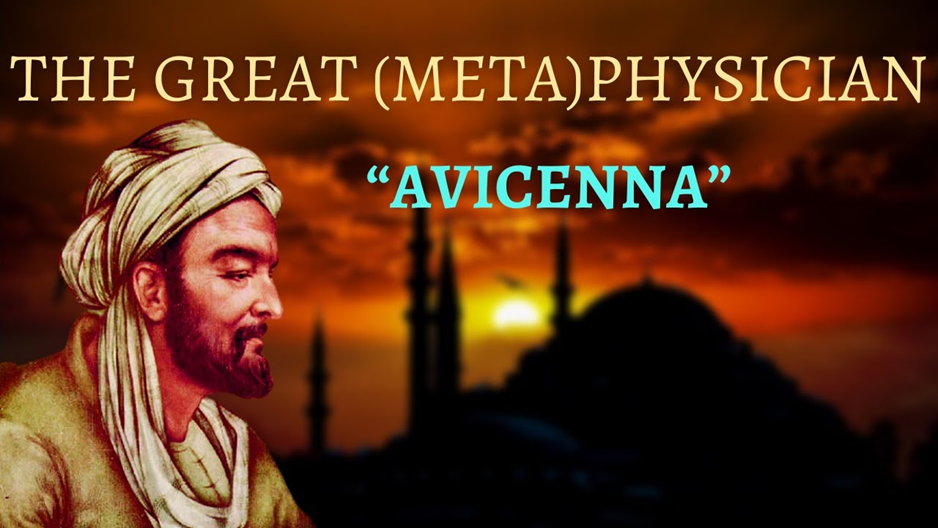
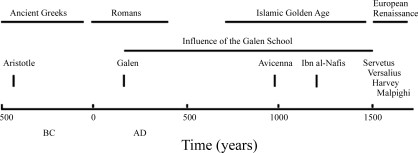
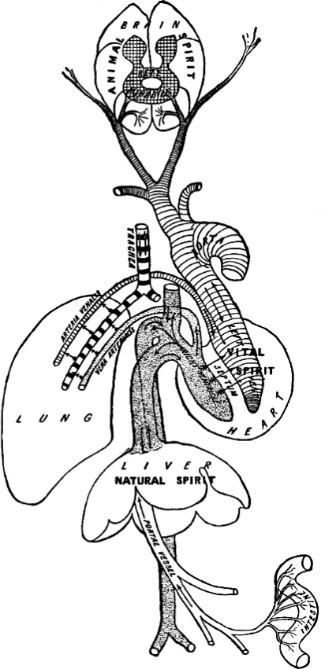
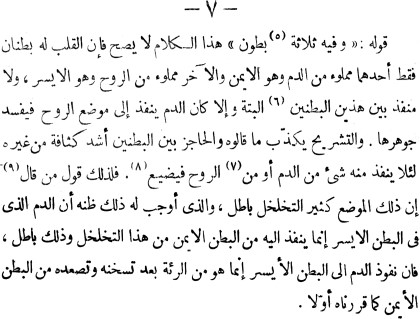
Be the first to comment on "Discoverer of Blood Circulation: Ibn al-Nafis"